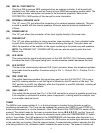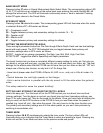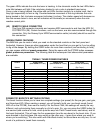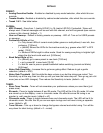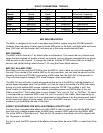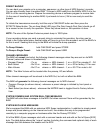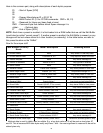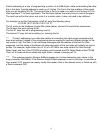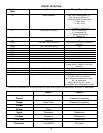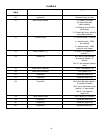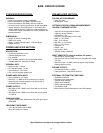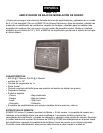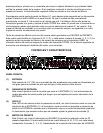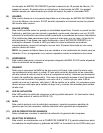
17
Partial addressing is a way of programming a portion of an EdBuf byte, while not disturbing the other
bits in that byte. A partial address is made up of 3 bytes. The first is the byte address of the preset
byte you are targeting (00-1E). The second byte is the bit number you want to start writing at (0 for
least significant, 7 for most significant). The third byte defines how many bits you want to program.
The next byte will be the value, and since it is a partial value, it does not need to be nibblized.
For example, to set the Compressor on/off bit, send the following string:
F0 00 00 1B 11 00 0E 01 06 01 01 F7
The 01 points to the Hardware Control Bits (table below), whose bit 6 controls the compressor.
The 06 says that we’re poking bit #6.
The first 01 says that we’re programming one bit.
The second 01 says that we’re setting (vs. clearing) the bit.
*** “Current” addressing is an alternate method of controlling the eight preset parameters that
have dual settings. Instead of the programming device needing to have two different strings for the
two levels of, say, Pre Gain, it can use these messages with the address of the first Pre Gain
parameter, and the status of the Boost will determine which of the two bytes will actually be read or
written. For example, eight sliders (out of 16) of a PC1600x can write current Pre Gain through
Delay Level, and five of the PC1600x’s buttons could emulate the EFX Select Mode of the PFC4B.
Then, all 16 levels could be edited with eight sliders, instead of needing all 16.
**** This message sends a Receive EdBuf message so it is less destructive upon return to the
amp (overwrites the EdBuf). If the Receive Single Preset message is sent to the amp, it overwrites a
User preset. A PC program can easily modify the header if this is the desired result, or follow up with
a Store command (0A).



